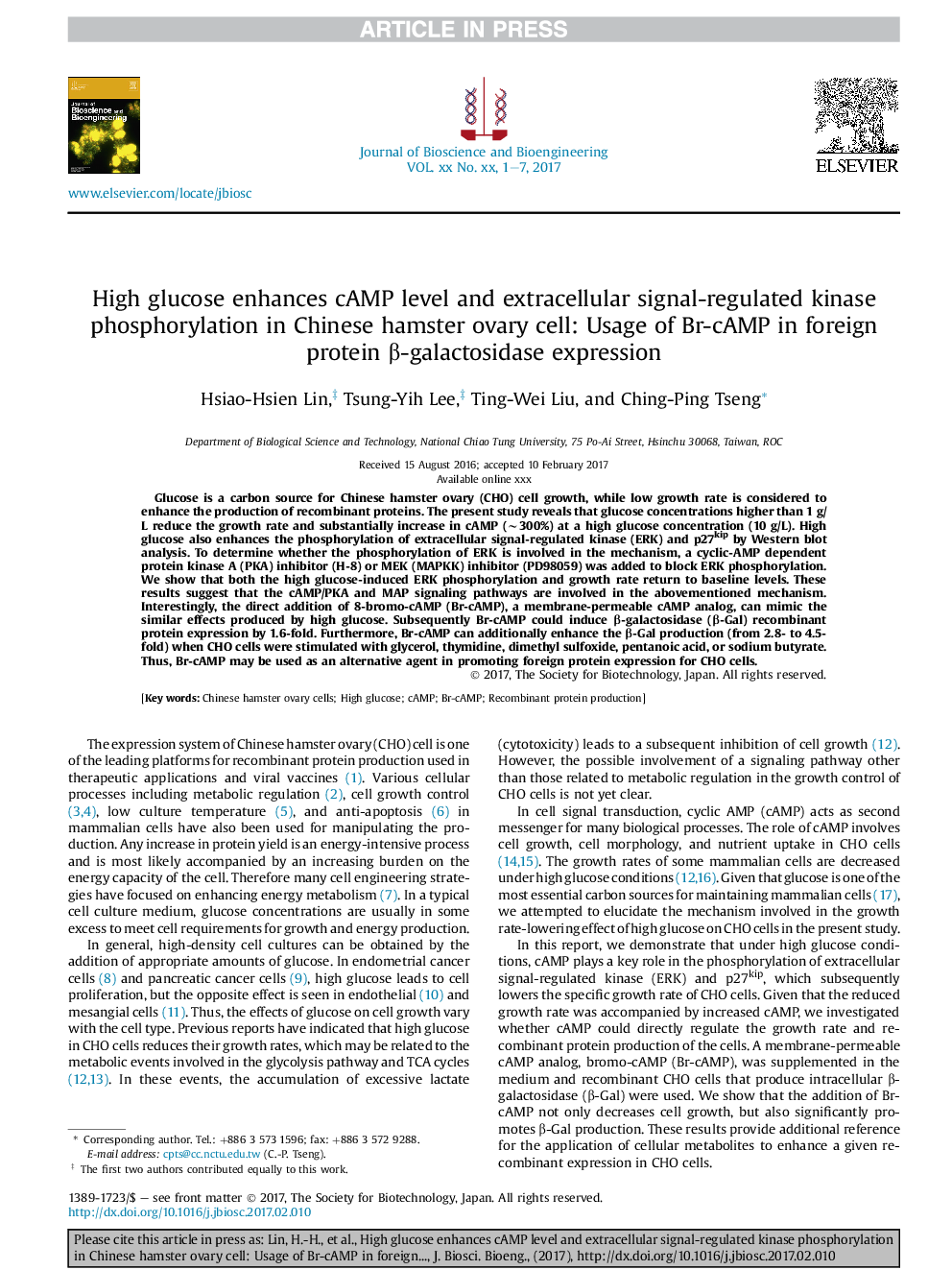| Article ID | Journal | Published Year | Pages | File Type |
|---|---|---|---|---|
| 4753315 | Journal of Bioscience and Bioengineering | 2017 | 7 Pages |
Abstract
Glucose is a carbon source for Chinese hamster ovary (CHO) cell growth, while low growth rate is considered to enhance the production of recombinant proteins. The present study reveals that glucose concentrations higher than 1 g/L reduce the growth rate and substantially increase in cAMP (â¼300%) at a high glucose concentration (10 g/L). High glucose also enhances the phosphorylation of extracellular signal-regulated kinase (ERK) and p27kip by Western blot analysis. To determine whether the phosphorylation of ERK is involved in the mechanism, a cyclic-AMP dependent protein kinase A (PKA) inhibitor (H-8) or MEK (MAPKK) inhibitor (PD98059) was added to block ERK phosphorylation. We show that both the high glucose-induced ERK phosphorylation and growth rate return to baseline levels. These results suggest that the cAMP/PKA and MAP signaling pathways are involved in the abovementioned mechanism. Interestingly, the direct addition of 8-bromo-cAMP (Br-cAMP), a membrane-permeable cAMP analog, can mimic the similar effects produced by high glucose. Subsequently Br-cAMP could induce β-galactosidase (β-Gal) recombinant protein expression by 1.6-fold. Furthermore, Br-cAMP can additionally enhance the β-Gal production (from 2.8- to 4.5-fold) when CHO cells were stimulated with glycerol, thymidine, dimethyl sulfoxide, pentanoic acid, or sodium butyrate. Thus, Br-cAMP may be used as an alternative agent in promoting foreign protein expression for CHO cells.
Related Topics
Physical Sciences and Engineering
Chemical Engineering
Bioengineering
Authors
Hsiao-Hsien Lin, Tsung-Yih Lee, Ting-Wei Liu, Ching-Ping Tseng,
